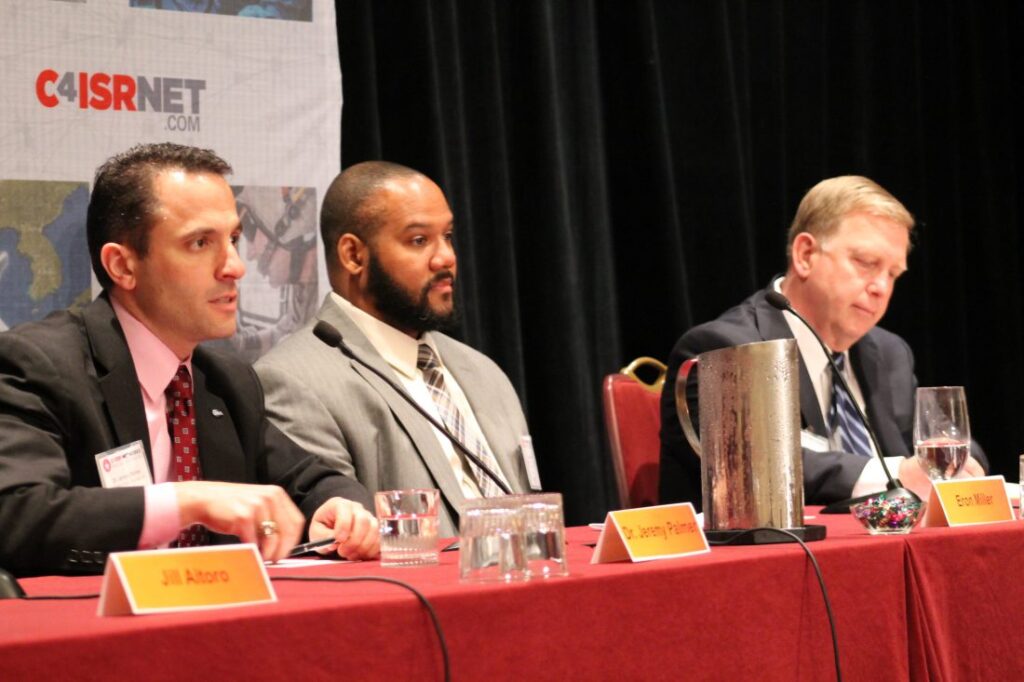In a recent post on the GovSat Report, we reported from a breakfast event hosted by C4ISR and sponsored by SES Space and Defense entitled, “Assured Communications 2016,” where the keynote speaker, Winston Beauchamp, spoke about the role of commercial satellite communications (COMSATCOM) in the military, and how space is ”no longer a safe haven.”
However, Mr. Beauchamp was just one of the many thought leaders present at this exciting event, which also included a panel discussion featuring Dr. Jeremy Palmer, the Project Manager for DARPA’s Tactical Technology Office, Eron J. Miller, the Chief of DISA’s SATCOM Division and Peter F. Hoene, President and CEO of SES Space and Defense.
During their panel discussion, both Mr. Miller and Dr. Palmer laid out their organization’s current work and mission as it pertains to space, and also spoke to some of the exciting ways in which the military is evolving and changing its acquisition process.
Traditionally, the Department of Defense (DoD) has leased – primarily via DISA – transponder bandwidth from large COMSATCOM providers as the way to meet its SATCOM needs in theater. Importantly, DoD continues to lease significant amount of bandwidth to help support military operations around the world.
According to Mr. Miller, “Historically, we’ve leased between seven to ten gigahertz worth of bandwidth per year to support the [Department of Defense]. We had steady growth from 2001 to the high water mark of 2011. And we’ve had a slight tail-off but it’s been holding steady between six and six and a half gigahertz of capacity per year.”
This year-to-year leasing of capacity is not the most effective or efficient way to purchase COMSATCOM services. As we’ve discussed in previous posts, leasing this way comes at a premium, since the COMSATCOM operators effectively have to reserve that bandwidth for government use, whether it’s utilized or not. This model is short-sighted doesn’t allow the military to realize efficiencies of scale that would come with a longer term leases.
Fortunately, these inefficiencies haven’t gone unnoticed by DoD leadership, including DISA’s Mr. Miller, and supporting Congressional oversight committees that acquire and provide oversight of COMSATCOM services for the military. It’s clear that a new path forward must to be identified. DISA, in concert with DoD, is exploring what those paths forward might be through the use of COMSATCOM Pathfinder programs, which are effectively allowing the military to pilot innovative acquisition and management strategies for COMSATCOM services.
As Mr. Miller said, “…what we’re trying to accomplish with the Pathfinders is to better understand our requirements, ensure efficient utilization of what we’re buying, investigate alternative means to acquire, and lastly, investigate alternative management strategies.”
Although they may seem like an unnecessary step – especially with an analysis of alternatives (AoA) rapidly approaching in the near future – these Pathfinder programs are essential at a time of significant change in the industry. The COMSATCOM industry is increasingly moving towards managed services as a way to deliver SATCOM to customers, and new technologies – including High Throughput Satellites – are being adopted that are drastically changing the way SATCOM is delivered. This change is forcing the military to reconsider how it was traditionally done business.
As the COMSATCOM Pathfinders and the AoA continues, the satellite industry has one request – a seat at the table.
According to Pete Hoene of SES Space and Defense, “I would like to see more industry-government interaction, quite simply. I’d like Eron’s team to interact more with the owner-operators. I’d like Jeremy’s team to interact more with the owners-operators and even manufacturers for that matter…It’s absolutely critical, as we move forward, to look to commercial to drive the technology improvements and innovation.”
As the military looks to different ways to purchase and manage their COMSATCOM resources, Mr. Hoene challenged the government to bring its problems to the satellite industry so that they could find innovative answers:
“We would like to see some bold initiatives. So, say, you need an advanced package in Southeast Asia, or over the southwest Pacific. We would step up to the plate and do that in a heartbeat. We can do some experimentation and prototyping and then get these capabilities out to the field.”
For additional information on the anticipated changes in how the military acquires COMSATCOM services, click on the articles below:
How DoD is re-writing the rules of space – C4ISR & Networks
Industry looks to DoD for SATCOM demand signa – C4ISR & Networks
Lessons Learned from Pathfinder One – Space News
